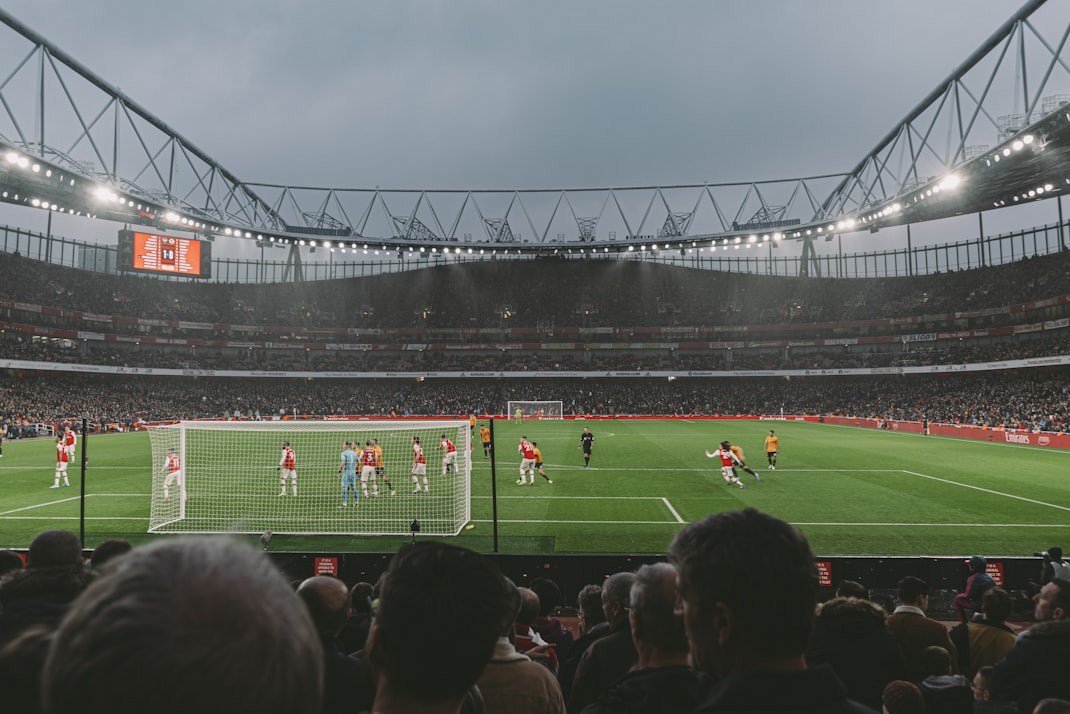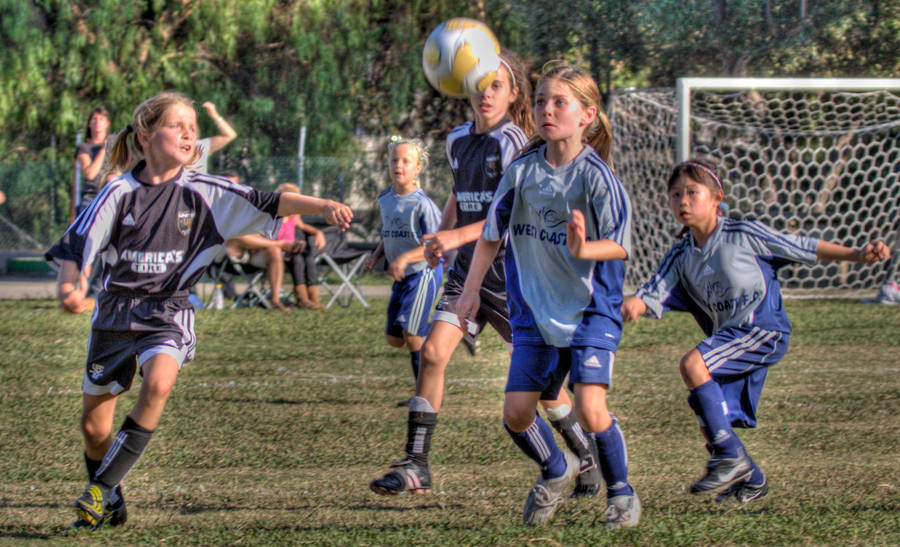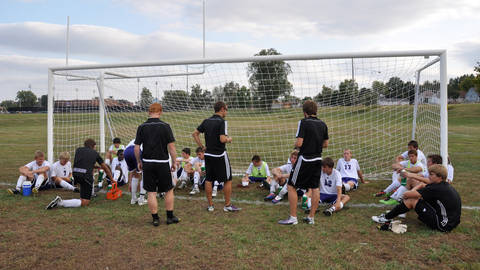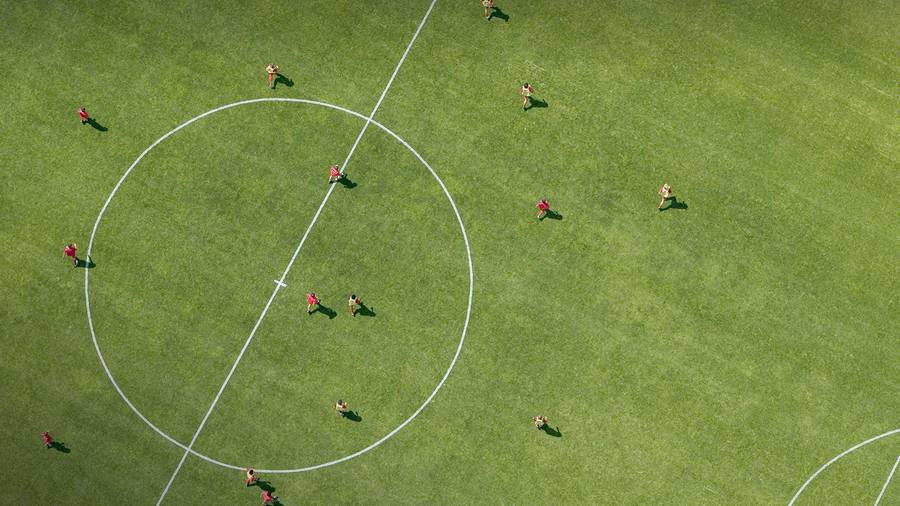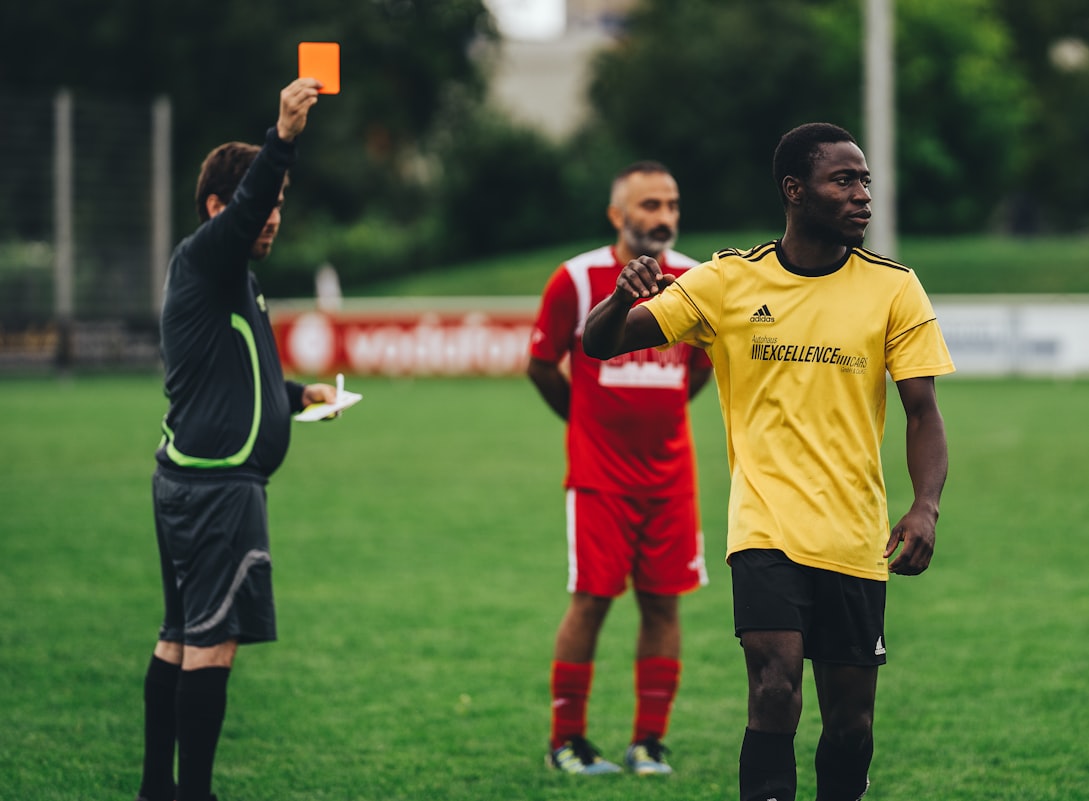In the world of football, the number six position holds a central and multifaceted role within a team's squad. Often referred to as a defensive midfielder, the player assigned to this position serves as a crucial link between defence and attack.
They are typically tasked with shielding the defence by intercepting opposition attacks and initiating their own team's offensive play with precise distribution.
A number six player must possess a diverse skill set, combining defensive prowess with the vision to read the game effectively. These midfielders are instrumental in controlling the tempo of play, making intelligent decisions, and providing tactical balance to their side.
Their contributions might not always be as visible as those of a goalscorer, but their impact on the success of a team cannot be understated.
Their role is versatile, capable of adaptability within different formations. Whether operating as part of a midfield triangle in a 4-3-3 formation or alongside another holding midfielder, their primary objective is to protect the defence.
Modern football has seen the number six role evolve, involving a balance of defensive duties and contributing to offensive manoeuvres. This evolution makes the number six position not only fundamental but also a complex and highly respected role on the pitch.
For those looking to follow the impact of these key players across leagues, you can explore related football markets that reflect their influence on team dynamics and outcomes.
The Role of Number Six in Football
The number six, or the defensive midfielder, is a fundamental position in modern football, connecting the team's defence and attack and providing support across the central midfield.
Defining the Number Six Position
A number six in football is primarily considered a defensive midfielder, positioned centrally, just in front of the defenders. In the context of various formations, the number six serves as a pivot, the player through whom much of the play passes when transitioning from defence to attack.
This role is alternatively referred to as a holding midfielder or deep-lying midfielder. The individual occupying this position has a unique set of responsibilities that distinguishes them as the team's midfield anchor:
-
Defensive Duties:
- Tackling: Removing the ball from opponents' possession.
- Interceptions: Cutting off passes and disrupting attacking patterns.
- Providing defensive cover: Shielding the backline to prevent attacks.
-
Offensive Duties:
- Initiating attacks: Passing the ball to more offensive players to start an attacking move.
- Ball retention: Maintaining possession to allow the team to build play.
The position demands not only physical attributes like stamina and strength but also intellectual ones, such as positional awareness and tactical understanding.
Tactical Importance of a Number Six
The tactical significance of the number six cannot be understated in both defensive and offensive phases of the game. They often dictate the tempo, making them indispensable for maintaining a balanced team structure.
-
Defensive Phase:
The number six is a team's first line of defence against opposition attacks. When the team loses possession, the number six's role is to halt advancing opponents and recover the ball.
Their ability to read the game and make interceptions is crucial to stopping potential threats early.
-
Offensive Phase:
In attack, the number six transitions the ball from defence to offence, typically through precise passing or by carrying the ball forward.
They must choose the right passes and often act as a support option during attacking plays.
The seamless execution of these responsibilities ensures that the team remains compact and can effectively switch between defending and attacking, thereby underlying the number six's role as a fundamental pivot point in football strategy.
Key Responsibilities
The key responsibilities of the number six position in football centre around maintaining the team's defensive structure and initiating the transition from defence to attack. These duties demand not only tactical understanding but also positional discipline.
Defensive Duties
- Maintaining Positioning: The player must consistently position themselves in front of the backline, effectively shielding the defenders by cutting off passing lanes and anticipating the movements of opposing attackers.
- Defensive Actions: They are primarily responsible for tackling, intercepting passes, and providing defensive cover. Their goal is to disrupt the flow of the opposing team's attacking play and regain possession swiftly.
Transitioning to Attack
- Supporting the Attack: Once possession is won, the number six must transition the ball to more attacking players, acting as a pivot between defence and attack.
- Ball Distribution: They must have the vision to dictate the pace of the game with intelligent decision-making, often initiating attacking plays with accurate and strategic passing.
Notable Number Six Players
The number six jersey holds historical significance in football, often associated with pivotal players who possess an outstanding ability to balance defensive duties with midfield control. From historical figures who've defined the role to contemporary stars revolutionising the position, the legacy of 'number six' is etched deeply in football's rich tapestry.
Historical Icons
Bobby Moore
Although not a midfilelder, Bobby Moore was an iconic number six, playing at centre-back for West Ham United and England. He epitomised leadership and composure and his name is synonymous with the number six shirt, having lifted the World Cup for England in 1966.
Claude Makelele
Regarded as one of the best defensive midfielders, Claude Makelele transformed the role during his time at clubs like Real Madrid and Chelsea. His playstyle was so influential that the 'Makelele Role' was named after him.
Andrea Pirlo
Andrea Pirlo, an Italian maestro, redefined the deep-lying playmaker position. He conducted play with grace and precision, most notably for AC Milan and Juventus.
Gennaro Gattuso
Gennaro Gattuso is revered as a tactical enforcer. His tenacity for A.C. Milan and Italy provided a balance that allowed his more creative teammates to thrive.
Contemporary Stars
Sergio Busquets
Sergio Busquets is a paradigm of the modern number six – a tactician with an uncanny ability to read the game.
- Club: Barcelona
- Strengths: Tactical awareness, vision
Rodri
Rodri, under the guidance of Pep Guardiola at Manchester City, has shown immense prowess in controlling the tempo and recycling possession.
- Club: Manchester City
- Strengths: Ball distribution, positional intelligence
Joshua Kimmich
Joshua Kimmich of Bayern Munich exhibits versatility, often transitioning from defence to attack seamlessly.
- Club: Bayern Munich
- Key Attribute: Tactical flexibility
Casemiro
Casemiro's contributions at Real Madrid have been critical, often providing the shield for the backline while initiating attacking plays.
- Former Club: Real Madrid
- Current Club: Manchester United
- Role: Defensive Midfield
Fabinho
At Liverpool, Fabinho stands out for his defensive acumen and ability to contribute in transitions.
- Club: Liverpool
- Specialty: Defensive interventions
Jorginho
Playing for Chelsea, Jorginho's adeptness at controlling the rhythm of play has made him a key figure in their midfield setup.
- Club: Chelsea
- Skill Set: Tempo control, penalty taking
Declan Rice
West Ham United's Declan Rice is making his mark as a dynamic number six with his robust defensive skills and growing leadership qualities.
- Club: West Ham United
- Attributes: Defensive solidity, leadership
Tactical and Technical Skills
The role of the number six in football encompasses a plethora of tactical and technical skills necessary for controlling the flow of the game effectively. He or she is pivotal in linking defence with attack, utilising a breadth of abilities to influence the match from a central position.
Passing and Distribution
A number six's proficiency in passing and distribution forms the technical backbone of his or her play.
Key technical skills such as a sensitive first touch and precision in passing lines enable them to maintain possession and dictate the tempo.
They are adept at both short passes to retain control and expansive, long balls to unlock defences.
- Key Passing Skills:
- Accuracy in short and long-distance passes
- Ability to pick out teammates through tight spaces
Anticipation and Interceptions
The tactical intelligence of a number six is reflected in their anticipation and ability to make crucial interceptions.
They read the game shrewdly, predicting opponents' moves to regain possession effectively. Their tactical understanding allows them to spot and react to potential threats before they materialise.
- Tactics in Anticipation:
- Positioning to disrupt opposing passing channels
- Timing of challenges to regain possession
Strength and Composure
Physical elements such as strength are integral to a number six's game, ensuring they can hold off opponents and win key duels.
Coupled with composure under pressure, they can shield the ball and provide stability in the midfield, a technical necessity to create or prevent pivotal moments in the game.
- Physical and Mental Attributes:
- Strength to withstand and apply physical pressure
- Composure to execute decisions calmly
Team Dynamics and Midfield Synergy
The number six role in football is central to creating seamless interactions within a team, ensuring that the midfield acts as a bridge between defence and attack.
It's critical for maintaining balance and providing support where needed.
Working with Other Midfielders
In a typical setup, the number six partners with other midfield roles, such as the number eight or ten, to control the central area of the pitch.
The number six's tactical understanding and communication are key in coordinating movements that complement the more dynamic roles of their midfield partners:
- Number eights - positioned slightly ahead, they focus on box-to-box play.
- Number tens - operate in more advanced positions, looking to create opportunities.
The effectiveness of the midfield unit depends on their ability to read each other's movements and adapt their positioning accordingly.
Cooperation with Defenders and Attackers
The number six serves as a vital link between the back four and attackers. Their responsibilities include:
- Support for defenders: They shield the back four, especially centre-backs, intercepting through balls and initiating counter-attacks.
- Transition to attack: They distribute the ball to attackers, often seeking out wingers or full-backs making overlapping runs.
Their cooperation with defenders ensures defensive stability, while their connection with attackers facilitates a smooth transition into offensive play.
Communication with both lines is essential for maintaining a compact team shape and executing the coaching strategy.
Physical and Mental Attributes
The role of the number six in football encompasses a combination of unique physical and mental attributes essential for mastery of the position.
They not only require quickness and alertness but also the ability to lead and make vital decisions under pressure.
Positional Awareness and Speed
A number six must exhibit exceptional positional awareness and speed.
As a defensive midfielder, their primary role is to intercept and contain opposing advances, necessitating rapid shifts in position to maintain possession and control of the game.
- Positional Awareness: Crucial to maintain effective positioning on the pitch.
- Speed: Essential for quick transitions between defence and attack.
Leadership and Decision-Making
Leadership and decision-making abilities are integral traits for a number six.
They often orchestrate the flow of a match from a central, defensive position, allowing them to guide their teammates and determine the team's tactical approach in real-time.
- Leadership: Inspires confidence and guides team tactics.
- Decision-Making: Quick and accurate decisions help retain possession and dictate play.
Strategic Positioning
The strategic positioning of the defensive midfielder, known as the number 6, is crucial in orchestrating the team's performance on both ends of the pitch.
They must possess a keen sense of placement to balance defensive rigour with offensive support.
Role in Defensive Shape
In the defensive phase, the number 6's primary task is positioning themselves effectively to break up opposition attacks.
They need to maintain a central position slightly ahead of the centre-backs, ready to intercept passes and halt opposing playmakers.
The ability to read the game and anticipate movements is essential, thus allowing them to cut out threats before they materialise.
- Key responsibilities:
- Interception of passes
- Marking attacking midfielders
- Providing cover for the back line
Defensive midfielders commonly hold a side on posture to maintain a wide field of vision, enabling them to react swiftly to changes in play.
Their role is pivotal in maintaining the team's defensive shape, ensuring compactness and minimising spaces for opponents to exploit.
Contributions to Offensive Strategy
Transitioning to offence, the number 6 becomes the critical link between defence and attack.
Their positioning must facilitate playmaking, often dropping between or alongside centre-backs to collect the ball and initiating forward motion.
- Offensive contributions:
- Distributing passes to more advanced players
- Supporting wide players and providing an option for recycling possession
Adept defensive midfielders transform into attacking midfielders by executing precise through balls and dictating the tempo.
Their role and responsibilities include orchestrating attacks and facilitating ball transition to put the team on the front foot, signifying the sheer versatility and indispensability of their position.
Cultural and Historical Impact
The role of the number six in football has undergone significant metamorphosis, shaping the cultural and strategic framework of the sport at both national and club levels. This position's influence is evident in historic FIFA World Cup triumphs and pivotal UEFA Champions League moments.
Number Six in World Football
In world football, the jersey number six is often associated with the 'defensive midfielder' – a role pivotal in balancing defence and attack.
Players in this position are not only a shield for the backline but also serve as a launchpad for transitioning play. They possess a blend of tactical awareness, technical skill, and robust physicality.
Historically, figures sporting the number six have provided pivotal performances during FIFA World Cup tournaments, contributing to their team's stability and control over matches.
- FIFA World Cup: Notable number six players have led their nations to glory with a blend of tenacity and tactical acumen.
- Influence: These midfield maestros are often the unsung heroes, celebrated for their work rate and dedication to the team's strategic ethos.
Evolving Role in Modern Tactics
The evolution of the number six role reflects the tactical transformations within modern football.
Their contributions have become more nuanced, shifting from purely defensive operations to more dynamic, playmaking duties.
The modern number six often dictates the tempo of the game, recycles possession effectively, and initiates offensive play.
- Modern football: The tactical foresight of these players allows them to thwart opposition attacks and springboard their own team forward.
- European Club Football: In leagues like the English Premier League and La Liga, the number six has been revolutionised, with these players contributing to ball circulation and pressing strategies.
In leagues as competitive as England's top-flight or Spain's La Liga, the number six must continuously adapt to the high-tempo, technically demanding environment.
They are critical in matches where control of the midfield often decides the outcomes in fixtures of high stakes, such as UEFA Champions League encounters.
Coaching the Number Six
A successful soccer coach recognises the critical role of a number six in both build-up play and transition phases. The number six operates as a pivot in the team's midfield, often dictating pace and offering protection during counter-attacks.
Build-Up Play: In the build-up phase, they are responsible for connecting the defence to the attack.
Coaches often work with the number six on enhancing their passing skills.
Drill sessions include a range of exercises focused on short, sharp passes and long, sweeping balls to diversify passing ranges. An ideal number six has the capacity to switch play effectively and launch attacks from deep positions.
Counter-Attack Transition: When coaching the number six against counter-attacks, the emphasis is placed on positional awareness and the ability to read the game.
The player must anticipate opposition movements, making crucial interceptions or tackles to disrupt play.
An adept number six can thwart opposing advances and quickly transition to facilitate their team's counter-attack.
Defensive Duties: Instruction on marking and ball retention is vital.
Coaches implement training exercises to improve the player's one-on-one defensive abilities as well as group strategies to close down spaces.
Ball retention under pressure is another key aspect; the player must be confident in possession, minimising turnovers that might lead to opposition attacks.
Coaches like Pep Guardiola have demonstrated how a number six can be instrumental in a team’s success.
By focusing on technical, tactical, and psychological aspects, soccer coaches can cultivate a player who's an integral linchpin between defence and attack.
Tactical Formations and Systems
The role of the number six is pivotal across various tactical formations and systems, influencing both defensive solidity and transition play.
This section explores the intricacies of this position within different team structures and its adaptability to overarching team strategies.
Number Six in Different Formations
In a 4-4-2 system, the number six usually operates alongside another midfielder, contributing to both defence and attack.
This formation typically does not label midfielders as 'number six', but the role is akin to that of a central midfielder with defensive responsibilities.
The 4-3-3 formation often utilises a single number six as a defensive pivot. Below is a breakdown of this role within the formation:
- Defensive Duties: Shielding the back four and intercepting opposition play.
- Ball Distribution: Acting as a key player in the build-up of attacks from deep positions.
Contrastingly, the 4-2-3-1 can deploy two players in the number six roles, functioning as a double pivot.
- Left-sided pivot: Typically focuses on ball recycling and distribution.
- Right-sided pivot: May take on a more combative role, breaking up plays and supporting the defence.
Adaptability to Team Strategy
The number six must exhibit flexibility to suit the team's strategic needs.
They often adjust their positioning, aggressiveness, and passing style depending on whether their team is in possession or defence.
The adaptability of the number six can be seen in how they:
- Position themselves: Adapting their location on the pitch in response to the flow of the game.
- Alter passing: Ranging from short, stabilising passes to long balls intended to initiate counter-attacks.
Conclusion
The role of the number 6 in football is critical to a team's structure and overall balance. This deep-lying midfield position is central to linking defence and attack, offering protection and initiating transitions from the base of central midfield.
Typically, the player occupying this role is expected to demonstrate a deep understanding of the game, effective decision making, and should possess a combination of defensive skills, ball control, and distribution abilities.
A team's performance is often stabilised through the presence of a skilled number 6, who can intercept opposition play, break down attacks, and maintain possession to dictate the tempo of the match. They are frequently the first line of defence and kickstart the first phase of their team's offensive play.
In terms of formation, a single number 6 can operate in a midfield trio, commonly seen in a 4-3-3 setup.
In systems where two players share this role, such as in a double pivot, the pair work in unison beneath the attacking midfielders, offering both security and support.
The impact of the number 6 cannot be overstated. While their contributions may not always capture the limelight like goal-scoring forwards, their influence is no less crucial. Their role requires a sophisticated skill set and an aptitude for reading the game – assets that significantly enhance a squad's capability on both ends of the pitch.

